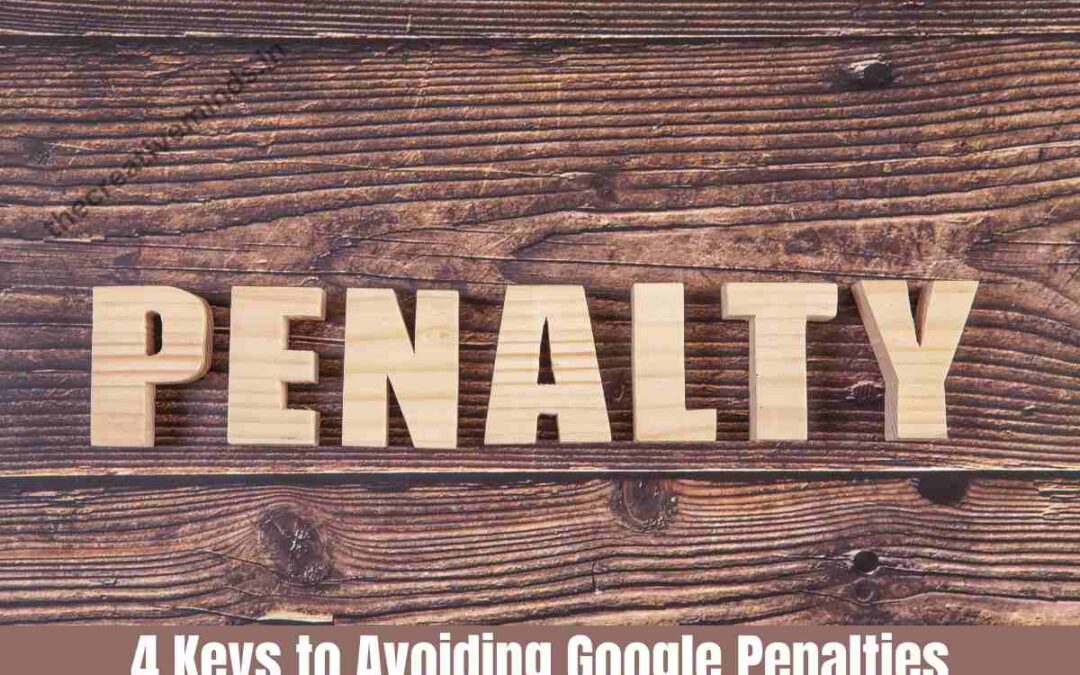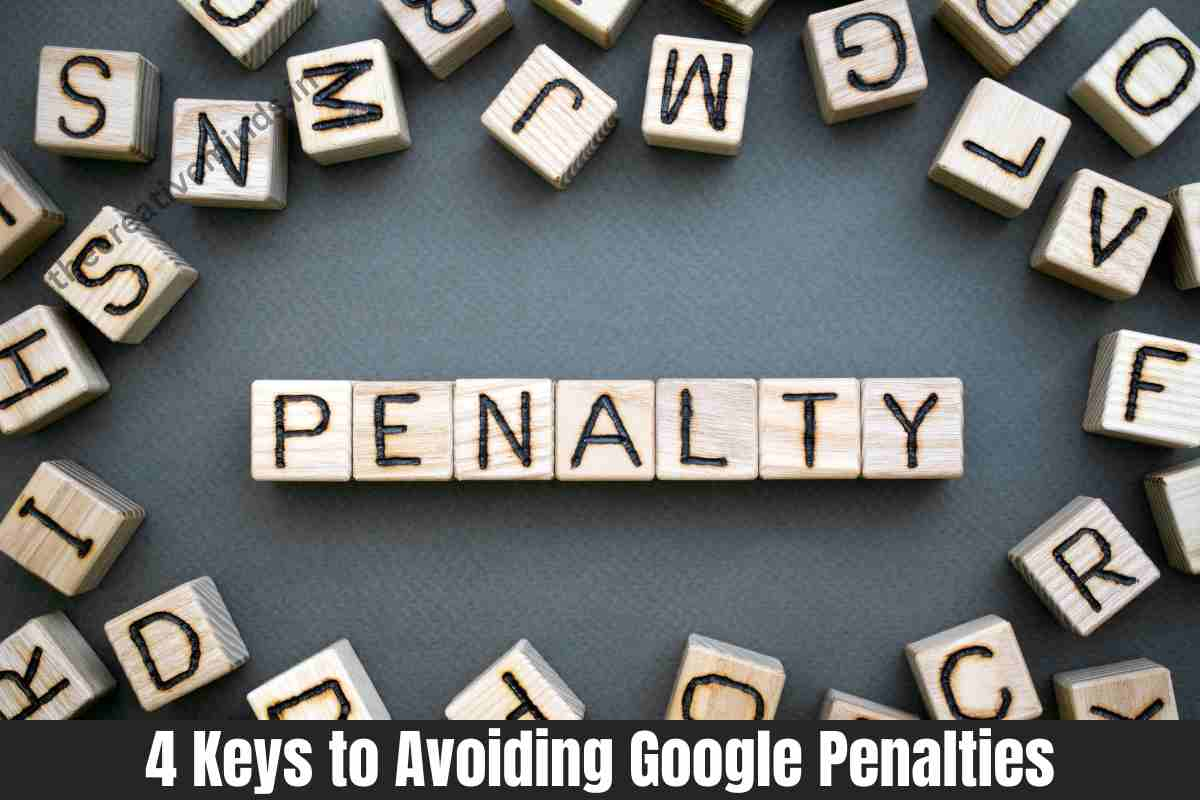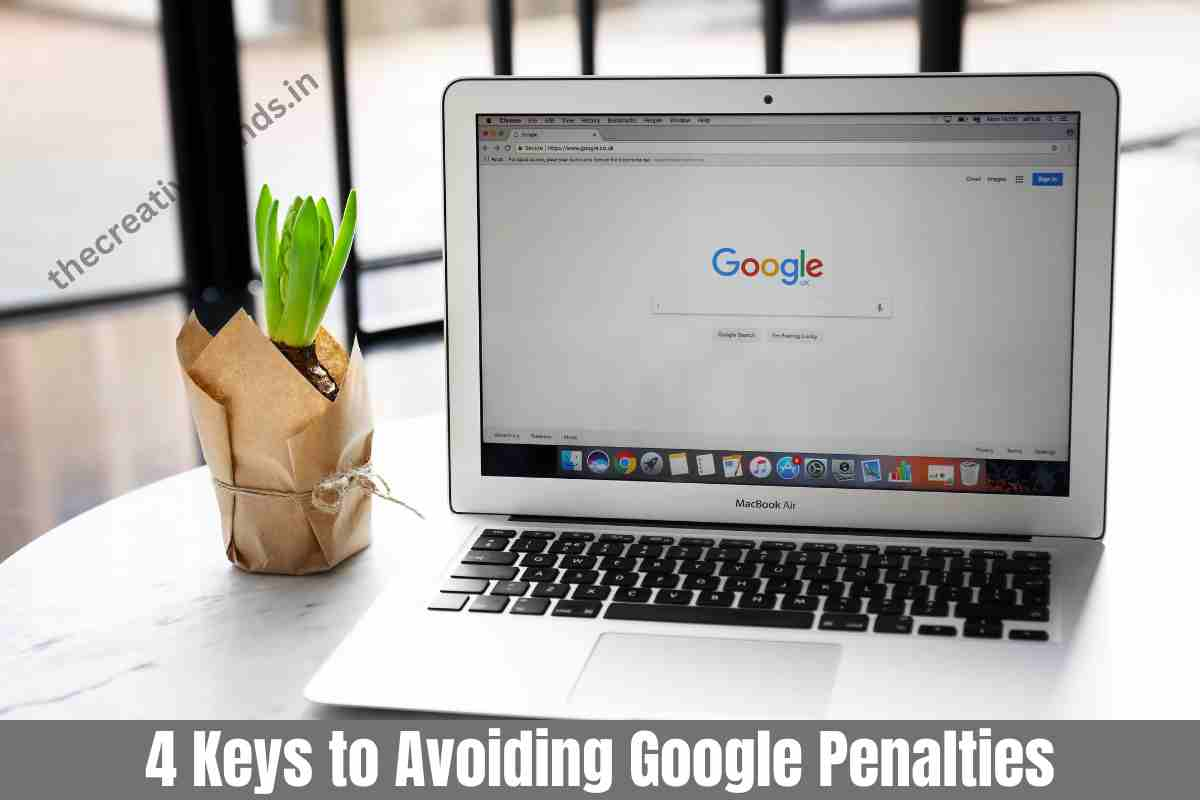4 Keys to Avoiding Google Penalties: In the ever-evolving landscape of search engine optimization (SEO), staying informed about Google’s algorithm updates and associated penalties is crucial for maintaining a solid online presence. Google’s algorithms, such as Penguin, Panda, and the imposition of Manual Actions, play a significant role in determining a website’s search ranking based on its adherence to Google’s quality guidelines. Understanding these algorithms and the penalties they can impose is not just about avoiding negative impacts; it’s about embracing practices that align with creating a positive and valuable user experience.
The Penguin and Panda updates were introduced to penalize websites that employ manipulative techniques or provide low-quality content, respectively. On the other hand, Manual Actions are direct interventions by Google against sites that violate its webmaster guidelines. Each mechanism targets different aspects of a website’s content and SEO strategies. Still, they share a common goal: to reward high-quality, relevant content and penalize practices that aim to manipulate search rankings unethically.
This blog post aims to demystify Google’s Penguin, Panda, and Manual Actions. We will explore their histories, what they target, real-life examples of penalties, and, most importantly, how to avoid or recover from them. By understanding and adhering to Google’s guidelines, you can ensure your website not only avoids penalties but thrives in Google’s search results, providing valuable content to your audience. Let’s dive into the details of each algorithm and Manual Action, starting with the Penguin update.
Understanding Google’s Penguin Update
1. History and Purpose
Introduced in April 2012, Google’s Penguin update aimed to decrease the search rankings of websites that violate Google’s Webmaster Guidelines by using manipulative link schemes and keyword stuffing. Before Penguin, it was relatively easy for sites to rank higher in search results by acquiring low-quality links and over-optimizing keywords. Penguin changed the SEO landscape by penalizing these practices, encouraging a shift towards more natural link-building methods and relevant, helpful content.
2. Types of Practices Targeted
Penguin primarily targets two types of black-hat SEO practices:
1. Link schemes: Practices such as buying backlinks, excessive link exchanges, or using automated programs to create links to your site.
2. Keyword stuffing: Overloading webpages with keywords or numbers to manipulate a site’s ranking in Google search results.
3. Examples of Penguin Penalties
Real-life examples of Penguin penalties often involve sites that experienced significant drops in traffic and rankings overnight due to their backlink profiles. Many of these sites had to undergo thorough link audits, disavowing toxic links and revamping their SEO strategies to focus on quality content and legitimate link-building practices.
4. Avoiding and Recovering from Penguin Penalties
To avoid Penguin penalties:
Regularly audit your site’s backlink profile to identify and remove unhealthy links.
Focus on earning high-quality links through valuable content and legitimate outreach.
Avoid using exact-match anchor text excessively.
5. Recovery from a Penguin penalty involves:
We are identifying and removing or disavowing toxic backlinks.
We are improving the quality of your site’s content.
I was submitting a reconsideration request to Google if your site was manually penalized.
By prioritizing these practices, websites can not only avoid the negative impacts of the Penguin update. Still, they can also improve their overall SEO strategy, focusing on building genuine, high-quality web presences.
Decoding Google’s Panda Update
1. Explanation and Significance
Launched in February 2011, the Panda update was designed to lower the rank of “low-quality sites” or “thin sites” in favor of higher-quality sites near the top of the search results. Panda targets websites with poor content quality, including thin, duplicate, and content that provides little or no value to the reader.
2. Kinds of Content Issues Addressed
Panda addresses several content quality issues, such as:
Thin content: Pages with very little or no original content.
Duplicate content: Substantial blocks within or across domains that match other content or are appreciably similar.
Low-quality content: Content that does not provide value to the reader, including poorly written content, content crowded with ads, or content that needs to be more helpful or relevant to the site’s audience.
3. Examples of Panda Impact
Sites affected by Panda saw dramatic drops in traffic as their pages were deemed low-quality and were downranked. Recovery stories often involve comprehensive content audits, eliminating duplicate or thin content, and a renewed focus on quality, original content tailored to the audience’s needs.
4. Strategies for Panda-proofing Your Website
To Panda-proof your website:
1. Conduct regular content audits to identify and improve or remove low-quality content.
2. Focus on creating original, high-quality content that provides value to your audience.
3. Ensure all content on your site is relevant to your audience and your site’s purpose.
Recovering from a Panda penalty may require significant changes to your content strategy. Still, it ultimately leads to a more robust, valuable website that resonates with users and ranks well in search results.
1. Overview of Manual Actions
Google Manual Actions are direct penalties applied by Google’s webspam team to websites that do not comply with Google’s webmaster guidelines. Unlike the algorithmic penalties applied by Penguin and Panda updates, Manual Actions result from a human reviewer determining that pages on a site are not compliant with Google’s quality guidelines. These actions can affect the entire site or specific pages and significantly impact a site’s visibility in Google search results.
2. Common Reasons for Manual Actions
Manual Actions can be triggered by a variety of violations, including but not limited to:
Unnatural links to and from your site: This includes participating in link schemes or buying links to pass PageRank.
Thin content with little or no added value: Similar to the content issues targeted by Panda, but identified and penalized directly by a human reviewer.
Cloaking and sneaky redirects: Showing different content to search engines than to users.
Hidden text and keyword stuffing: Practices that were common in the early days of SEO but are now penalized.
User-generated spam: Spammy content users add, often in comments or forum posts.
3. Identifying and Resolving Manual Actions
If your site has been subjected to a Manual Action, Google will notify you through the Manual Actions report in Google Search Console. The report will detail the reason for the penalty and the affected pages or sections of your site.
4. To resolve a Manual Action:
Identify the issue: Understand the specific violation cited by Google.
Take corrective action: Address the issue on your site, whether removing unnatural links, improving content quality, or correcting any other guideline violations.
Submit a reconsideration request: Once you’ve made the necessary changes, submit a reconsideration request through Google Search Console, including details of your actions to correct the violations.
Resolving Manual Actions can be a time-consuming process, but it’s crucial for restoring your site’s visibility in Google search results.
5. Preventing Manual Actions
To avoid Manual Actions:
Adhere to Google’s Webmaster Guidelines: Familiarize yourself with and follow Google’s guidelines to avoid violations.
Regularly audit your site: Perform regular audits to identify and rectify any potential issues before they result in a Manual Action.
Engage in ethical SEO practices: Focus on creating high-quality content and building natural links as a long-term SEO strategy.
Best Practices for Maintaining a Healthy Website
Maintaining a healthy website that adheres to Google’s guidelines requires a proactive and quality-focused approach to SEO. Here are comprehensive strategies to help avoid penalties and ensure your site remains in good standing.
1. Comprehensive Strategies for Avoiding Penalties
Regular Site Audits: Conduct comprehensive site audits to identify technical issues, content quality problems, and unnatural backlinks. Tools like Google Search Console, SEMrush, and Ahrefs can help.
Focus on Quality Content: Create high-quality, original content that provides real value to your audience. Quality content is the cornerstone of a penalty-proof SEO strategy.
Ethical Link Building: Earn links naturally through high-quality content and legitimate outreach efforts. Avoid participating in link schemes that can lead to penalties.
Monitor Your Site’s Health: Use tools to monitor your site’s health and keep an eye on your backlink profile, site speed, and user experience.
2. Importance of Quality Content and User Experience
Quality content and a positive user experience are vital for avoiding penalties and crucial for achieving and maintaining high search rankings. Google’s algorithms increasingly prioritize sites that offer valuable content and a good user experience, making these elements critical to a successful SEO strategy.
3. Tools and Resources for Monitoring and Maintaining Site Health
Several tools and resources can help you monitor and maintain your site’s health, including:
Google Search Console: Provides insights into your site’s performance in Google search and alerts you to any issues or penalties.
SEMrush: Offers a suite of tools for keyword research, site audits, and competitor analysis.
Ahrefs: Helps with backlink analysis, keyword research, and monitoring your site’s health.
Moz: Offers tools for link building, site audits, and SEO insights.
By leveraging these tools and focusing on quality content and ethical SEO practices, you can build a robust and healthy website that is less likely to incur Google penalties and is better positioned for long-term success.
Conclusion:4 Keys to Avoiding Google Penalties
Understanding and navigating Google’s Penguin, Panda, and Manual Actions is crucial for anyone involved in SEO. By adhering to Google’s guidelines and creating high-quality, valuable content, websites can avoid penalties and recover from them if necessary. The strategies and tips outlined in this blog post are designed to help you maintain a healthy website that thrives in Google’s search results.
The landscape of SEO is constantly changing, but the importance of quality content and ethical practices remains constant. By adopting a proactive approach to SEO and focusing on the long-term success of your website, you can navigate Google’s evolving algorithms and manual reviews confidently. Remember, the goal is to avoid penalties and create a valuable, engaging online presence that serves your audience’s needs and builds your brand’s credibility.
Navigating Google’s penalties requires vigilance, dedication, and a commitment to quality. By understanding the nuances of Penguin, Panda, and Manual Actions and implementing the best practices outlined in this guide, you can ensure your site remains penalty-free and excels in the ever-competitive search landscape.





Recent Comments